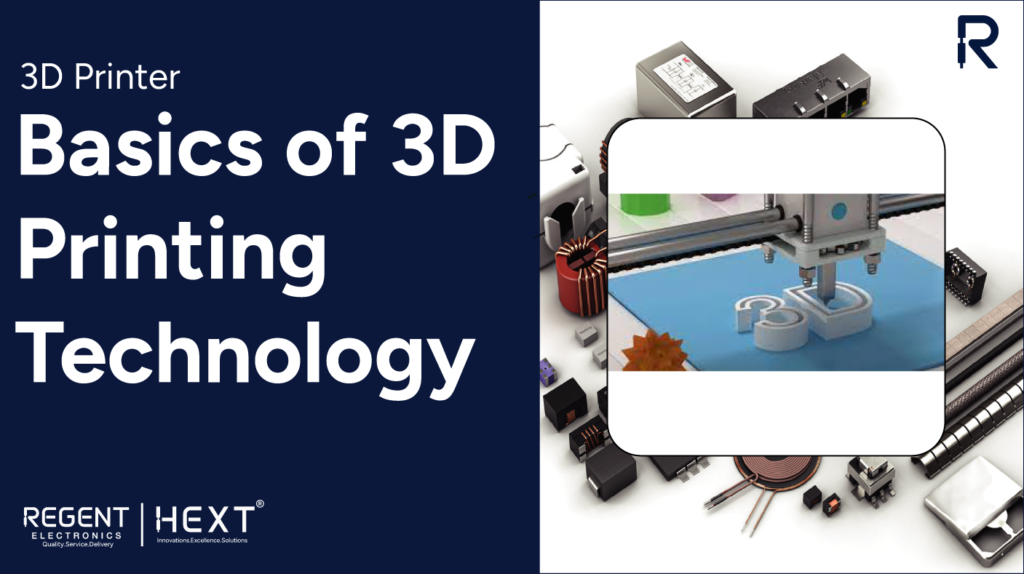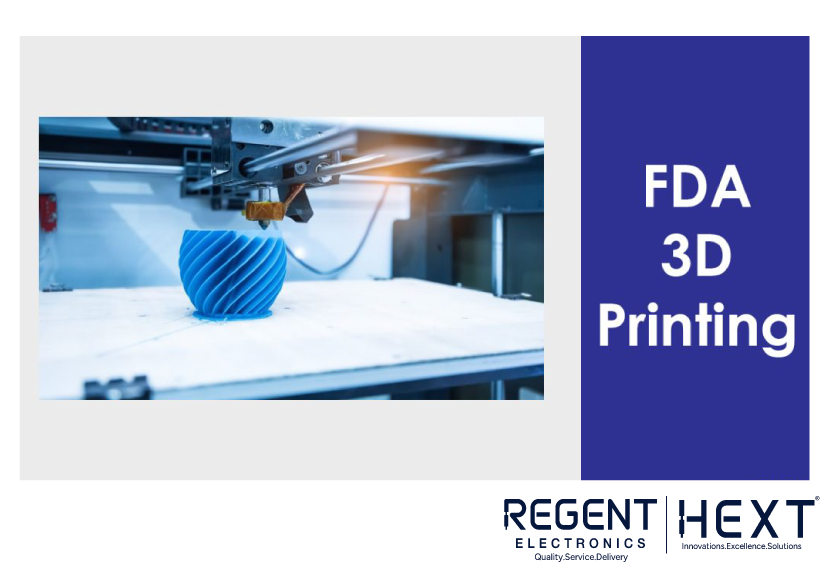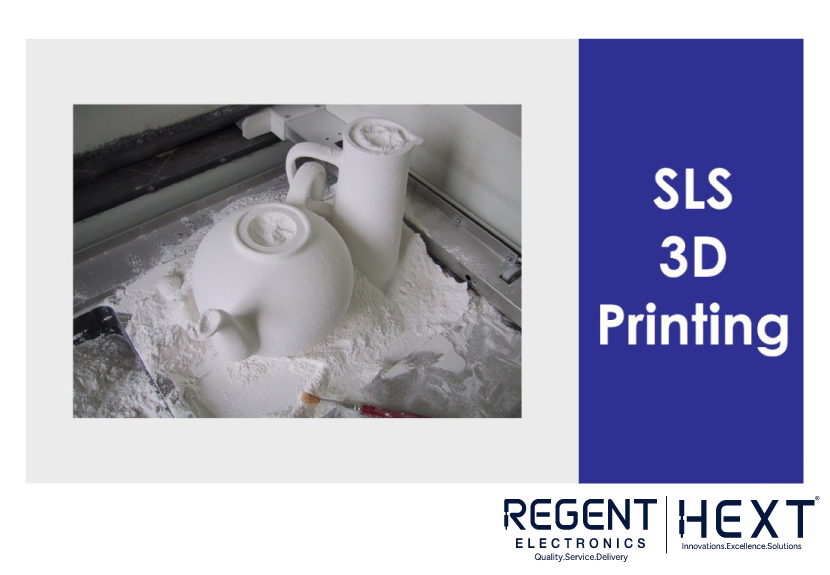
📘 Complete Guide: Basics of 3D Printing Technology – Types, Working, Benefits & More
Welcome to Regent Electronics’ complete guide to 3D printing—a rapidly growing technology that’s transforming how we design, prototype, and manufacture objects across various industries. Whether you’re a student, maker, or product developer, understanding the fundamentals of 3D printing can open doors to endless innovation.
In this blog, we’ll explore:
- ✅ What is 3D Printing?
- ✅ How 3D Printing Technology Works
- ✅ Types of 3D Printers (FDM & SLA)
- ✅ Key Advantages of 3D Printing
- ✅ Materials Used in 3D Printing
Let’s get started!
🔍 What is 3D Printing?
3D printing, also known as additive manufacturing, is a process of creating three-dimensional objects by layering materials one over the other based on a digital 3D model.
From custom jewelry and household items to functional prototypes and machine parts, 3D printing allows for high precision and complex geometry—something that traditional manufacturing techniques often struggle with.
As technology advances, affordable and accessible 3D printing services are becoming more common, bringing this cutting-edge innovation into the hands of students, small businesses, and makers.
⚙️ How 3D Printing Works – Step-by-Step Overview

Although various 3D printing methods exist, most of them follow the same three basic steps:
Step 1: Design Your 3D Model
You begin by designing a 3D model using CAD software or downloading one from online repositories.
Step 2: Prepare the Model for Printing
The file (usually in STL or OBJ format) is sliced into thin layers using slicing software to prepare it for the printer.
Step 3: Printing the Object
The printer builds the object layer by layer, following the design instructions until the final product is ready.
🖨️ Types of 3D Printers: FDM vs SLA
Let’s take a look at two of the most commonly used types of 3D printing technologies:
🔸 FDM (Fused Deposition Modeling) 3D Printing

FDM is one of the most widely used and cost-effective 3D printing methods for producing prototypes and functional mechanical parts.
- Uses thermoplastic filaments like PLA, ABS, and PETG
- Materials come in spools of 1.75 mm or 3 mm
- Heated extruder melts and deposits the material layer-by-layer
- Great for rapid prototyping and basic mechanical designs
- Easy to use and budget-friendly
🔸 SLA (Stereolithography) 3D Printing

SLA is the oldest and most precise 3D printing technology, ideal for highly detailed prints.
- Uses UV-curable liquid resin as material
- A UV laser or projector solidifies each layer with precision
- Produces smooth surface finishes with nearly invisible layers
- Best suited for industries like jewelry, medical, dentistry, and fine art
- Requires safety precautions due to resin toxicity
SLA subtypes include DLP (Digital Light Processing) and MSLA (Masked SLA), each offering faster print times and better resolution.
✅ Advantages of 3D Printing
Here are some of the biggest benefits that make 3D printing a preferred choice for modern manufacturing:
- 🔧 Flexible Design Capabilities
- 🚀 Rapid Prototyping
- 🏗️ Lightweight Yet Strong Components
- 🏭 Large-Scale Production Potential
- 💰 Cost-Effective Manufacturing
- 🔍 High Market Demand
- 🌐 Easy Accessibility of Services (Like Regent Electronics!)
🧪 Materials Used in 3D Printing
FDM Printers:
- PLA (Polylactic Acid)
- ABS (Acrylonitrile Butadiene Styrene)
- PETG (Polyethylene Terephthalate Glycol)
Each filament type has its own strengths, from ease of use to heat resistance.
SLA Printers:
- Light-reactive resins that harden under UV light
- Creates rigid or flexible parts based on resin chemistry
- Offers fine detail resolution unmatched by FDM printing
Material choice depends on the application, required strength, precision, and aesthetic finish.
🧠 Real-World Applications of 3D Printing
3D printing is widely used in:
- Consumer Electronics
- Product Prototyping
- IoT Devices
- Robotics and Drones
- Jewelry & Watches
- Medical Devices
- Education and Research
- Architecture Models
- Custom Art & Sculptures
- Promotional Items and more
💬 Final Thoughts
3D printing is more than a tech trend—it’s a game-changing tool that empowers innovation across every field. With the right printer, material, and design, anyone can turn ideas into reality.
If you found this guide useful, let us know in the comments! Stay connected with Regent Electronics for the latest updates, services, and tutorials on 3D printing.
